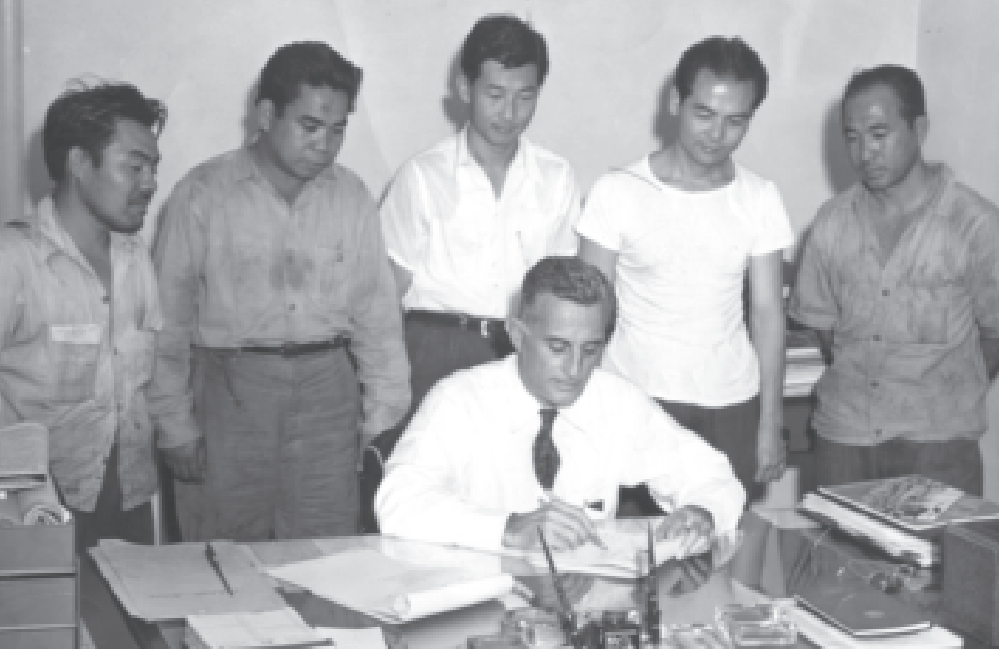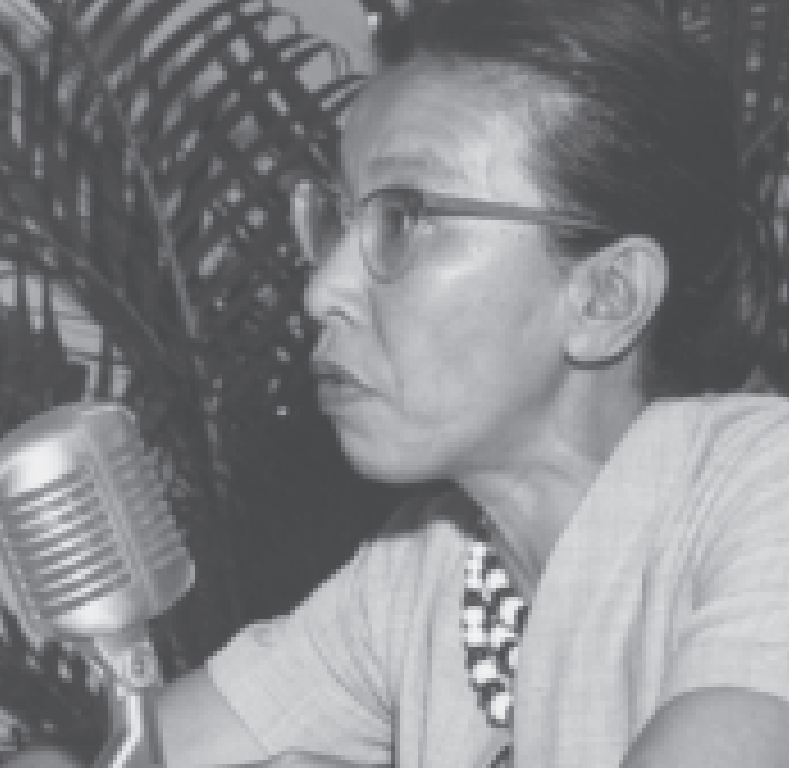Reviewed by Gene Vrana,
Director of Educational Services and Librarian
The origins of the ILWU in Hawaii spring from a mix of militant mainland industrial unionism and the rich and often bitter background of the Islands’ agricultural and longshore workers between about 1880 and 1934. It is one thing to trace the development of the ILWU in Hawaii’s labor movement, it is another to understand it in terms of the complex racial and ethnic forces at play during—and after—those early years. The importance—and difficulty—of exploring and evaluating this indispensable part of the heritage of the ILWU is charted with mixed success in Professor Moon-Kie Jung’s Re-Working Race: The Making of Hawaii’s Interracial Labor Movement.
Re-Working Race summarizes both the successes and defeats of the early efforts at unionization in the territorial era (statehood came in 1959), and clearly traces the extraordinary interlocking power among the ruling U.S. and European families (known as haoles) that dominated Hawaii’s politics and economy and came to be known through their corporate identities as the Big Five.
The Big Five used their control over agriculture, shipping and the governor’s mansion to restrict and repress the growth of workers’ rights and union organizing. Their success was often guaranteed by their ability to exploit existing prejudices between the Japanese, Chinese, Filipino and Portuguese workers who had been imported to work the sugar plantations—and to compete for work with Hawaiians and other Polynesian groups already living in the Islands.
The ILWU has often, and accurately, been portrayed as playing a pivotal role in breaking down the feudal rule of the Big Five and bringing interracial democracy to Hawaii. Moon-Kie Jung attempts to understand the impact and meaning of the racial and ethnic factors at play in this history, and to evaluate what kind of racial and cultural unity, known as interracial unionism, it took to build a vibrant ILWU and a successful labor movement.
Jung’s major conclusions are simple and well known to most ILWU members: success came only when, in accordance with ILWU principles, the various groups were willing to work together, and continued success required mutual respect of the different experiences and cultures of each group, as opposed to eliminating or ignoring those differences.
Success was also built on the accumulated understanding of how the workers had been previously been defeated because they had been divided—and that the newer pineapple industry did not have same feudal control of the workers as did the sugar plantations. Unlike the sugar owners, investors in pineapple plantations chose not to rely on imported and indentured labor, choosing instead to lure away sugar workers with slightly better wages and conditions.
Another factor in the major organizing drives of 1944-1946, as Jung clearly documents, is that the repressive controls exercised by the U.S. military under martial law during World War II built anger and resentment that helped fuel the commitment to build workers’ organizations after the war.
Jung also gives us fresh insight into how the ILWU experience in Hawaii transformed the rest of the union, particularly in the realm of political action and ongoing member mobilization and education from the neighborhood and workplace to the state capitol and beyond—and also redefined the “march inland” of 1935-1939 which organized mainland warehouse and distribution workers, to include agricultural workers—an industrial scope that today includes miners, radio operators, hospital workers, and others, united in an interracial, democratic organization.
Unfortunately, Jung’s sociological analysis of these topics is embedded in a style that will make the meat of the book unappetizing for most readers outside academia. ReWorking Race suffers from other characteristics of books written from doctoral dissertations: there are 192 pages of text and 100 pages of footnotes, bibliography and index— much of which is taken up with evidence that Jung has read just about everything other academics have written on the topic. This is not a bad thing in and of itself, it just leaves this reader thinking that the most interested audience will be other residents of academia, and not those engaged in making the history about which he has written. ◆

(L-r, standing) Shigeyoshi Agena, Prudencio Dela Cruz, Kenji Kimoto, Constancio Alesna and Fred Taniguchi (Kauai Division Director, 1966-1973) with L.A. Faye (sitting), Kekaha Sugar Co. Ltd. Manager, signing the 1946 sugar agreement.
A. Q. McElrath offers some thoughts on “Reworking
Race”
Some after-thoughts to Brother Vrana’s perceptive review of MoonKie Jung’s “Reworking Race—The Making of Hawaii’s Interracial Labor Movement.”
Race relations are never easy to predict. Depending on what is happening in a country and its labor needs for economic development, those in power (including lawmakers) determine to a large extent how a community reacts to immigrant workers. And so it happened in Hawaii.
As alluded to in the review, but worthy of further emphasis, the success of the ILWU in breaking the so-called feudal rule of the Big Five companies in Hawaii stemmed from a specific set of conditions created by capitalism internationally in the early 20th century. These conditions mixed a dictatorial plantation economy with the need to import thousands of field hands from around the world to toil in the sugar industry, which itself required a complex mix of free trade and governmental protections to maximize both profits and the repression of the workers.
It is interesting to note that the unique quality of Hawaii’s so-called interracial labor organizations came at a specific time and despite a history of anti-racial ideology on the part of the United States. History records the importation of over twenty-five million immigrants necessary for the economy of our new nation. Some times the so-called alien presence in America resulted in anti-immigrant violence, persecution, and prosecution. In more recent times these sentiments are found in the enactment of No Child Left Behind—which obviously work against immigrant children and the poor; and the reauthorization of the Patriot Act which contains many articles which work against immigrants individually and as members of political and social groups and challenges the nature of our government based on the Bill of Rights.
The answer now, it seems, is not so different from what happened some 60 years ago in the middle of the Pacific: one need only look at the few South American countries which have so recently made a move towards ensuring that their people will be able to get a decent kind of life despite NAFTA and CAFTA.—a life built upon unity, militancy, and democratic organization. Perhaps in the final analysis it is not so much interracialism that matters as it is the ability to understand that what truly matters is to take a stand against discrimination, injustice and impoverishment of humanity. And if we are to learn from our own experience in the ILWU, perhaps the best chance of making that stand is through a trade union, or a community group or any other organization determined by its members—ordinary working people of any race or culture. ◆

A. Q. McElrath testifies on medical care of the aged before a US Senate Committee hearing, November 1961.
